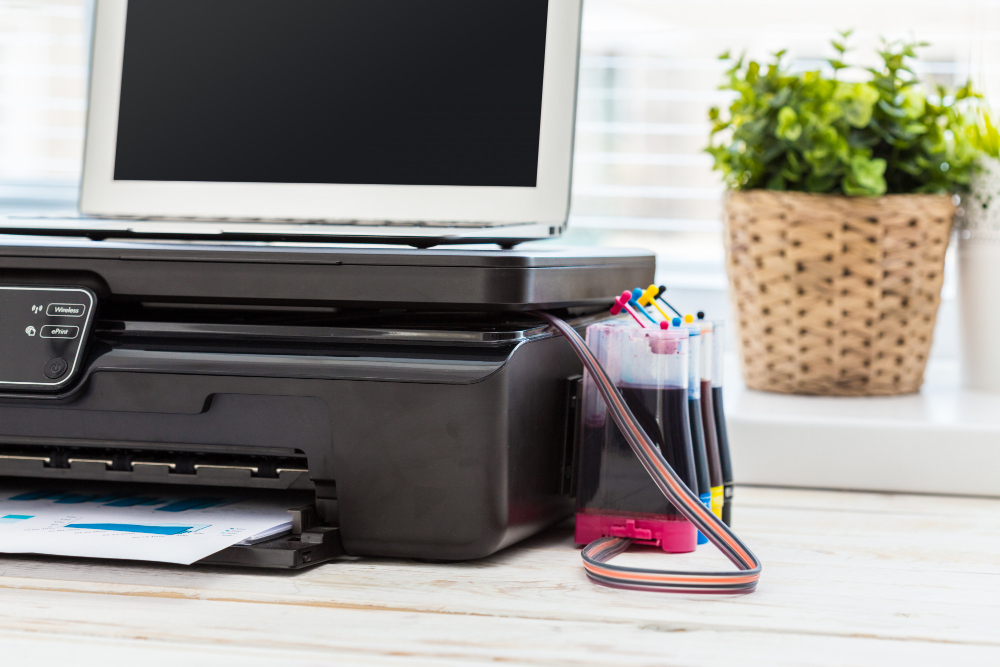A printer paper jam is one of the most common and frustrating issues faced by users. Whether you’re working in a bustling office or printing important documents at home, a paper jam can disrupt your workflow and waste valuable time. Thankfully, fixing a paper jam is usually straightforward, and with proper care, you can resolve it without causing damage to your printer. In this comprehensive guide, we’ll explore the causes of paper jams, step-by-step solutions to fix them, and tips to prevent future occurrences.
What Causes Printer Paper Jams?
Understanding the root cause of a paper jam can help in preventing future problems. Common reasons include:
- Using Poor-Quality Paper: Low-grade or damp paper is prone to sticking together, causing jams.
- Overloading the Paper Tray: Exceeding the paper tray’s capacity can lead to misfeeds.
- Incorrect Paper Alignment: Misaligned sheets may be pulled unevenly, resulting in a jam.
- Worn or Dirty Rollers: Rollers responsible for feeding the paper can wear out or accumulate debris.
- Foreign Objects Inside the Printer: Staples, paper clips, or other small items accidentally left in the tray can block the paper path.
How to Fix Printer Paper Jams
Step 1: Power Down the Printer
Before attempting to fix a paper jam, always turn off the printer and unplug it. This ensures your safety and prevents further damage to the device.
Step 2: Open the Printer Panels
- Refer to your printer manual to locate access points, such as the input and output trays or the rear access panel.
- Carefully open these panels to expose the jammed paper.
Step 3: Gently Remove the Jammed Paper
- Do Not Tug: Pulling paper with excessive force can tear it, leaving pieces inside.
- Use both hands to gently pull the paper in the direction it feeds through the printer.
Step 4: Check the Paper Path
- Inspect the entire paper path for any torn bits of paper or debris.
- Use a flashlight if necessary to ensure no pieces are left behind.
Step 5: Inspect and Clean the Rollers
- Look for the rollers inside the printer and clean them using a lint-free cloth lightly dampened with water.
- Dirt or residue on the rollers can contribute to misfeeds.
Step 6: Reload Paper Properly
- Ensure the paper stack is not bent, curled, or folded.
- Fan the paper stack to separate individual sheets before loading it back into the tray.
- Adjust the paper guides snugly against the stack without applying excessive pressure.
Step 7: Close Panels and Power Up
- Securely close all panels and trays.
- Plug the printer back in and turn it on.
- Perform a test print to ensure the issue is resolved.
Specific Printer Types and Paper Jam Fixes
1. Inkjet Printers
- Inkjet printers often jam due to thin or irregular paper types.
- Open the front or back panel to access the jammed sheet.
- Avoid using glossy or thick paper unless the printer supports it.
2. Laser Printers
- Laser printers have more intricate mechanisms, including heated fuser rollers.
- Allow the printer to cool down before removing jammed paper.
- Access the jammed area through the rear or bottom panel.
3. Multi-Function Printers
- Multi-function printers with scanning and faxing capabilities may have additional paper paths.
- Check for jams under the scanner lid or in the automatic document feeder (ADF).
Common Mistakes to Avoid While Fixing a Paper Jam
- Using Tools: Avoid using sharp tools like tweezers or scissors, as they can damage internal components.
- Pulling in the Wrong Direction: Always remove paper in the natural feeding direction to avoid damaging the rollers.
- Skipping Inspection: Failing to check for leftover paper scraps can result in recurring jams.
Preventing Printer Paper Jams
1. Use High-Quality Paper
- Choose paper recommended by the printer manufacturer.
- Store paper in a dry, cool place to avoid moisture absorption.
2. Load Paper Correctly
- Align paper edges properly before placing them in the tray.
- Avoid overfilling the paper tray, as this can lead to misfeeds.
3. Maintain the Printer
- Regularly clean the printer rollers and internal components.
- Schedule routine maintenance to address wear and tear.
4. Inspect the Paper Tray
- Check the paper tray for any debris or foreign objects.
- Ensure the tray is inserted securely into the printer.
5. Keep the Printer Environment Stable
- Place the printer on a stable, flat surface to prevent misalignment.
- Avoid operating the printer in extremely dusty or humid environments.
When to Call a Professional
If you’ve followed all the steps above and the issue persists, it may be time to contact a professional technician. Issues such as broken rollers, damaged sensors, or internal hardware failures require specialized tools and expertise.
Conclusion
A paper jam might seem like a daunting problem, but with the right approach, you can resolve it quickly and safely. Start by identifying the cause, follow the step-by-step instructions to fix the jam, and implement preventive measures to avoid future occurrences. With proper care and maintenance, your printer will function smoothly for years to come.







